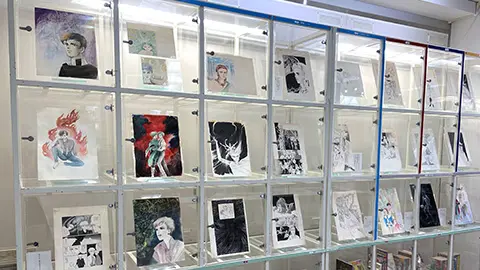VOL.195 AUGUST 2024
EXPLORE THE UNIQUE CHARM OF MANGA IN JAPAN
Museum Recreating the Legendary Tokiwa-so Apartment Building where Japanese Manga Masters Lived
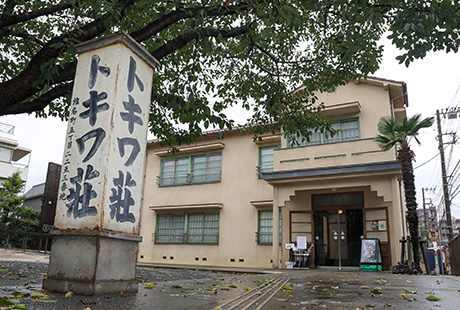
Photo: ISHIZAWA Yoji
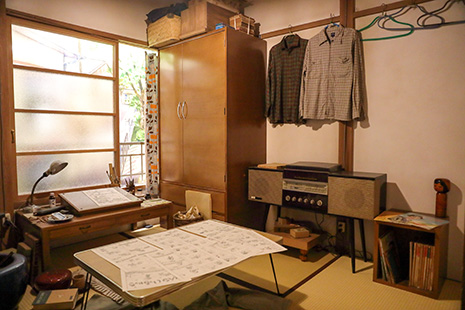
Photo: ISHIZAWA Yoji
The apartment building known as ‘Tokiwa-so,’ where Japanese manga masters including TEZUKA Osamu*, FUJIKO F. Fujio, FUJIKO Fujio Ⓐ**, AKATSUKA Fujio ***, ISHINOMORI Shotaro ****, and others spent their youth, has been recreated as a museum. The museum conveys the atmosphere of the manga artists’ creative activities and daily lives during that era.
Tokiwa-so, located in the former Shiina-machi***** near Ikebukuro Station in Tokyo, is a legendary apartment building where Japanese manga masters spent their younger years. Built in 1952, it remained a significant hub for manga artists until the early 1960s. Because of aging, Tokiwa-so was demolished in December 1982. However, many local residents and fans of the manga artists expressed a strong desire to see Tokiwa-so revived. In response to these requests, the local government of Toshima City established the Tokiwaso Manga Museum, which opened in 2020 and faithfully recreates the conditions of the original building. TAKAHASHI Mayu, responsible for the museum’s public relations, provided insights into the appearance of Tokiwa-so during that time.
“During the 1950s and 60s, Japan was experiencing a period of high economic growth. However, compared to today, it was also a time still affected by the Second World War and ongoing poverty. In such an era, the neighborhood where Tokiwa-so was located had a lively atmosphere, with movie theaters and public bathhouses,” explains TAKAHASHI. “Tokiwa-so was an ordinary apartment building for its time, and with manga artists such as TEZUKA Osamu and others who would later become popular residing there, it served as a base for emerging and dynamic manga creators.”
Tokiwa-so, where notable figures such as ISHINOMORI Shotaro and FUJIKO F.Fujio, FUJIKO Fujio Ⓐ gathered during the early days of manga in Japan, has been carefully recreated to capture its original atmosphere. The second floor of the museum, with its retro feel, authentically reflects the space that once existed in Tokiwa-so.
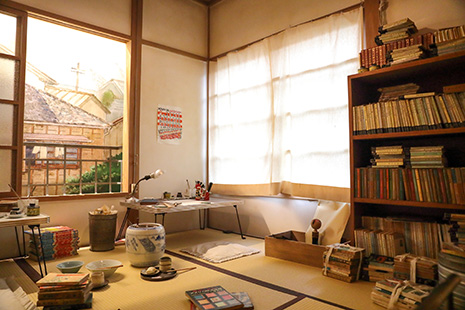
Photo: ISHIZAWA Yoji
“Room 18 has been recreated as the room of YAMAUCHI Johji******, who was an assistant to ISHINOMORI Shotaro. The shelves are filled with film reels and paperback books, which are replicas of ISHINOMORI’s personal belongings. ISHINOMORI, who loved new gadgets, kept buying televisions and 8mm cameras, eventually running out of space in his own room and placing them in his assistant’s room instead,” says TAKAHASHI.
In addition to the recreated workspaces where the artists created their works, the museum also features displays that provide insights into their daily lives.

Photo: ISHIZAWA Yoji
“The museum also displays cooking utensils and other items to convey the daily living conditions of the time, including the shared toilet and kitchen. Since there were no baths in the individual rooms, there are stories of ISHINOMORI Shotaro and AKATSUKA Fujio taking midnight water baths in the communal kitchen sink on hot days.”
According to TAKAHASHI, the lifestyle of these manga artists appears very fresh to visitors from abroad. “Some international visitors come because they love manga and anime, including the works created by the artists of Tokiwa-so. They are often surprised or fascinated by aspects of old Japanese life, such as the four-and-a-half-tatami mat rooms. There are also guests who have started studying Japanese because of their interest in manga.”
TAKAHASHI hopes that going to the museum will deepen visitors’ understanding of manga. “Through the recreated Tokiwa-so, we want visitors to experience the environment where the manga masters created classic works during their early years. The second floor of the museum mainly features displays recreating the conditions of the time, while the first floor includes a special exhibition room and a manga lounge where you can view materials and books related to the artists connected to Tokiwa-so. Please note that visits are prioritized by reservation, so be sure to apply through the official website.”
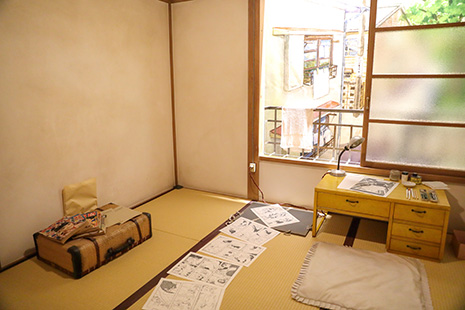
Photo: ISHIZAWA Yoji
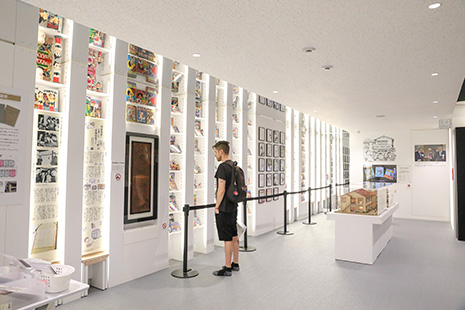
Photo: ISHIZAWA Yoji
* TEZUKA Osamu (November 3, 1928 – February 9, 1989) was a Japanese manga and animation artist who also held a medical degree. He was a leading figure in story manga in Japan. His notable works include Astro Boy (known in Japan as Mighty Atom (Japanese: Tetsuwan Atomu)), Phoenix, and Black Jack.
** FUJIKO F. Fujio (real name: FUJIMOTO Hiroshi, December 1, 1933 – September 23, 1996) and FUJIKO Fujio Ⓐ (real name: ABIKO Motoo, March 10, 1934 – April 6, 2022) worked under the pen name ‘FUJIKO Fujio’ at the time and shared a workspace. FUJIKO F. Fujio is known for the iconic series Doraemon, while FUJIKO Fujio Ⓐ is renowned for works such as Manga Michi.
*** AKATSUKA Fujio (September 14, 1935 – August 2, 2008) was a prominent author who laid the foundation for post-war gag manga. His notable works include Osomatsu-kun.
**** ISHINOMORI Shotaro (January 25, 1938 – January 28, 1998) was a leading figure in Japanese manga from the 1960s, alongside TEZUKA Osamu, known for his stylish work. His notable creations include Kamen Rider.
***** This area is now known as Minami-Nagasaki 3-chome, Toshima City, Tokyo.
****** YAMAUCHI Johji (November 24, 1940 – ) became independent after working as an assistant to ISHINOMORI Shotaro and AKATSUKA Fujio. He is considered the last resident of Tokiwa-so among the manga artists.
******* A Chinese restaurant frequently used for takeout by the residents of Tokiwa-so. It also appears in FUJIKO Fujio Ⓐ’s work Manga Michi.
******** MIZUNO Hideko (October 29, 1939 – ) is a pioneering Japanese female manga artist known for her work in shojo manga, a genre of Japanese manga aimed primarily at a young female audience. Her notable works include Hoshi no Tategoto.
By MOROHASHI Kumiko
Photo: ISHIZAWA Yoji
